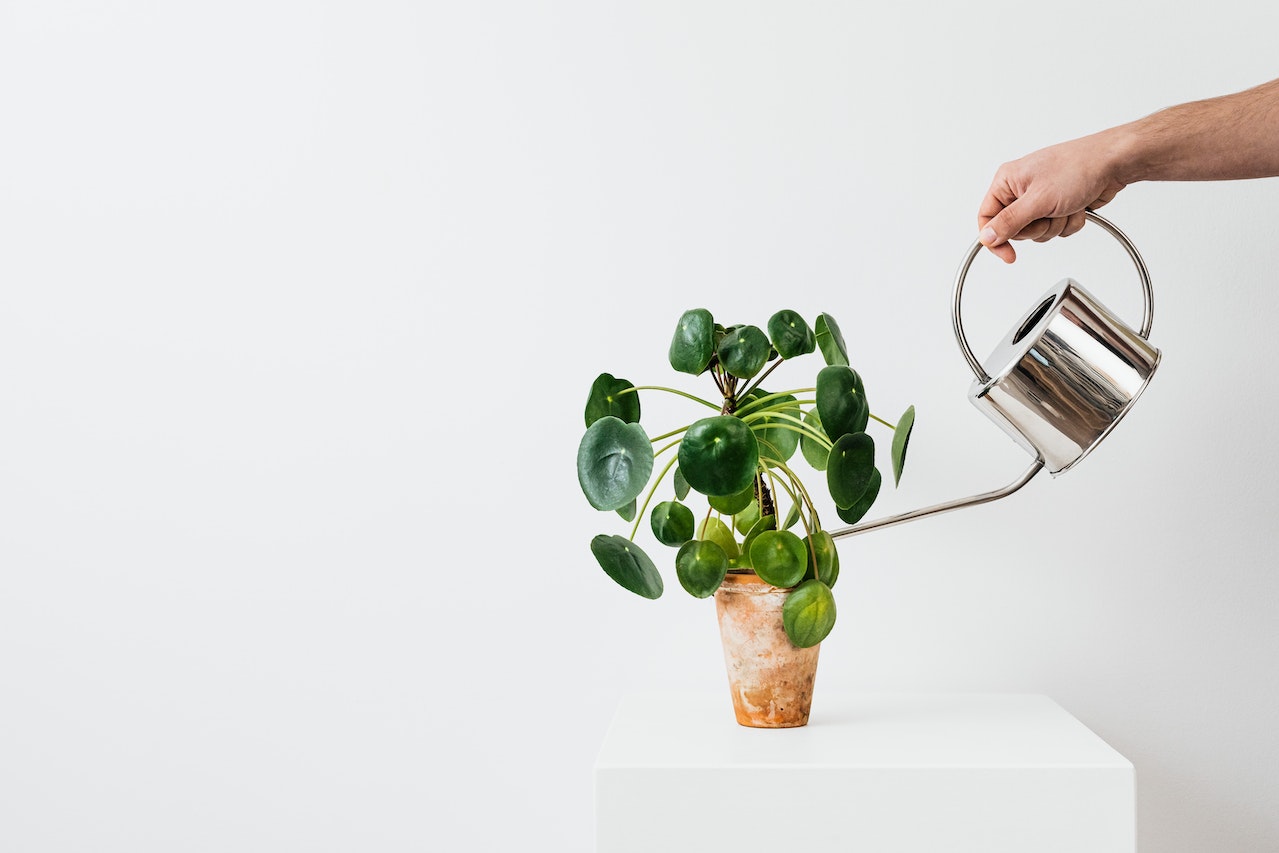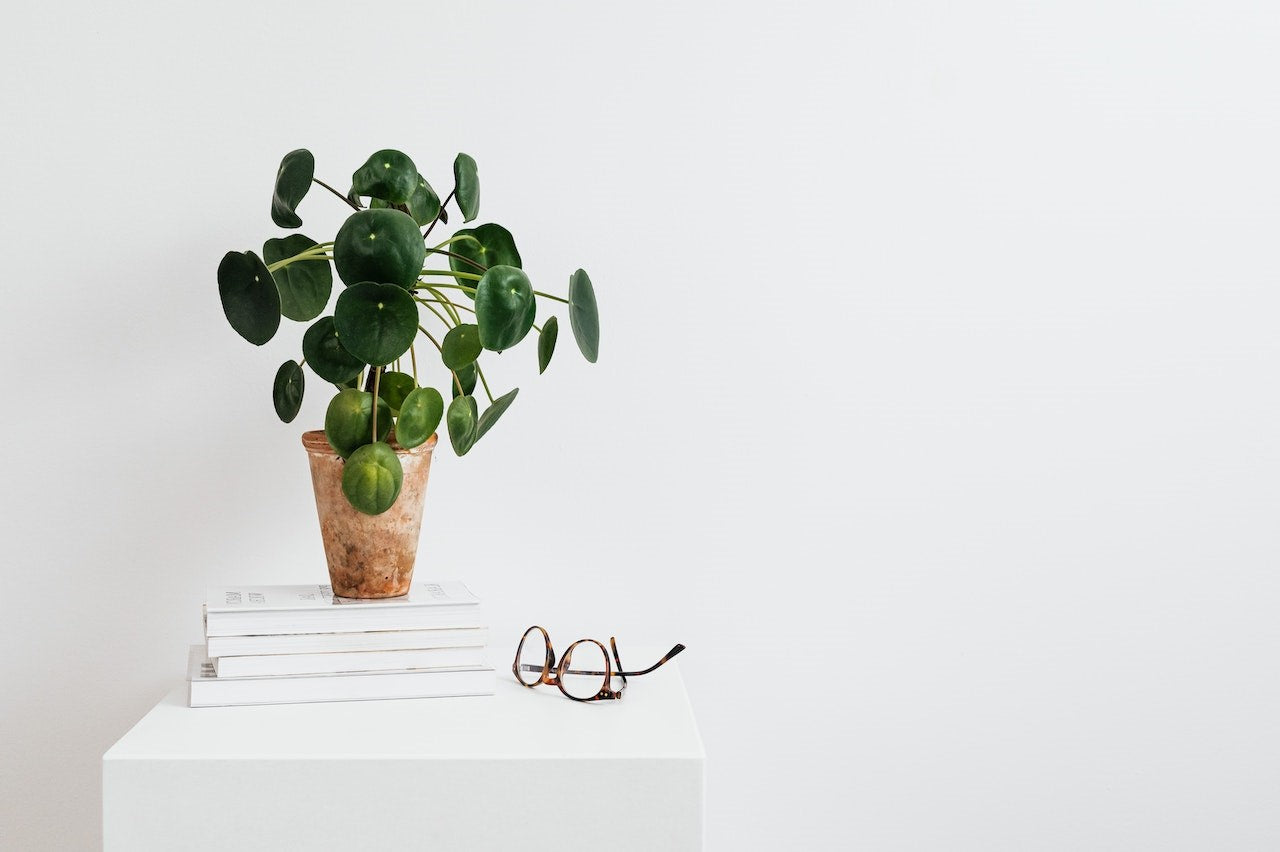The Chinese Money Plant, also called pancake or UFO plant, is a popular item in Scandinavian-inspired interiors. We can clearly see why. Its bright green “pancake” leaves provide a beautiful pop of color and distinctive shape to a white-walled, minimalist home. Plus, its delicate (but fun, adorable, and springy!) stems are easy on the eyes.
Pilea peperomioides, its scientific name, is generally a hardy plant that’s fairly easy to maintain. Of course, you can’t leave it alone to fend for itself and then expect it to thrive. You need to learn some tips on growing a Chinese Money Plant, especially if it’s your first time having one.
Read on to learn how to care for a Chinese Money Plant.
Where to Place It
To grow a Chinese Money Plant (or many other plant species, for that matter), you must find a good balance of the triumvirate–light, soil, and water. But first, let’s talk about lighting because we assume you’re growing your Chinese Money Plant inside your home. While it’s a hardy species and may survive tough conditions, getting the lighting right is still important, especially when you nurture this plant indoors.
Place your Chinese Money Plant in an area with bright natural light. But also make sure that sunlight doesn’t directly hit the plant. Although it thrives in bright light, direct sunlight can be too harsh on its delicate leaves. The window sill or a plant stand near a window is typically a good area for this houseplant. Some people place it further away from windows, which is okay if it receives ample light for at least four hours daily.
One indicator that your Chinese Money Plant is receiving too much light is that the leaves turn reddish around the edges. On the other hand, if you place it in a shady area, it may grow leggy, with taller stems and smaller leaves that are spaced far apart.
Maintaining Your Chinese Money Plant

1. Use the right soil mix.
Out in the natural world, Pilea peperomioides thrives in rocky mountain soil, so this plant is quite the survivor. But when growing it as a houseplant, you need to use rich and well-draining soil.
What’s key here is the draining capacity of the material to ensure the plant’s roots don’t drown or rot. In this case, regular garden soil and topsoil aren’t the best options for this plant. A good-quality organic potting soil mix, with peat moss and perlite as the base, can do the job well.
2. Avoid overwatering it.
Your Chinese Money Plant needs watering approximately once weekly. But it may also vary, depending on the weather, season, and environment. Just make sure not to overwater it and allow the soil to almost dry out between sessions.
Do a finger test to check if your Chinese Money Plant needs water. Simply push your finger one to two inches into the soil. If it’s dry, you need to water your houseplant. But if you still feel that it’s too damp, you don’t need to water it immediately.
At the same time, however, don’t let the soil completely dry out. The key here is to give your plant enough water to keep the soil just barely moist.
3. Get the right pot.
Because the soil needs to be dry enough between watering, you must use a pot with drainage holes. Getting the right soil mix isn’t enough to maintain your houseplant’s health if you insist on using hole-less pots and containers anyway. Excess water will be trapped at the bottom, drowning the roots and causing them to rot eventually.
4. Nurture it with fertilizer.
High-quality, organic, store-bought potting soil may already contain enough fertilizer to support a plant’s growth for about a year. However, an extra fertilizer boost may also do wonders for your Chinese Money Plant, especially in spring and summer. During these months, you can treat your houseplant with an all-purpose fertilizer.
You might also want to move your plant outside as the weather warms. Just be sure to keep it out of direct sunlight.
5. Clean and re-pot.
Chinese Money Plants have delicate leaves, so you need to be extra gentle when cleaning them. Mist the plant frequently to keep dust off it. But if the leaves are particularly dusty, gently wipe them with a damp cloth.
Repotting may also benefit your Chinese Money Plant. The ideal repotting schedule for this species (as an indoor plant) is once every two years, with new and fresh soil. Do this in the early spring, as the plant enters its growing season. Avoid repotting it frequently, as this may cause stress.
Propagating a Chinese Money Plant

It’s quite easy to propagate a Chinese Money Plant, which is probably one reason why it has become popular.
You can propagate it by allowing stem cuttings to take root in soil or water. It naturally produces plantlets or offshoots; you can simply transfer them into new pots.
- Propagating from plantlets or offshoots. Choose an offshoot that looks big and healthy (more than the others), then find the spot where its roots connect to the mother plant’s roots. Using a clean knife or scissors, gently cut this part from the main root. Transfer the offshoot immediately into a separate pot (that’s small enough) with moist soil.
- Propagating from stem offshoots. New plantlets also form directly from the stems. You can slice these off and then submerge the cuttings in water. Ensure the cut end reaches the water (and the leaves don’t). You can transfer the roots into small pots with soil when the roots develop.



Leave a comment
This site is protected by hCaptcha and the hCaptcha Privacy Policy and Terms of Service apply.